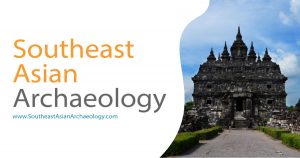New paper on the Bujang Valley by Stephen Murphy:
In the early 1830s and 1840s, a British colonial official by the name of Colonel James Low uncovered evidence for an early culture with Indic traits in a river system known as the Bujang Valley. On the west coast of the Thai-Malay peninsula, the Bujang Valley is today located in the Malaysian state of Kedah. However, it wasn’t until just before World War II that excavations took place, conducted by H. G. Quaritch Wales and his wife Dorothy. Their discoveries and subsequent publications led to the first real attempts to explain the origins and extent of this civilisation and its place within the larger South and Southeast Asian world. In the intervening years between Quaritch Wales’s excavations and the present day, considerably more research has taken place within the Bujang Valley, though this has not been without controversy. Recently claims and counter-claims regarding the antiquity of Hinduism and Buddhism at the site have arisen in some quarters within Malaysia. It therefore seems pertinent that this material be re-evaluated in light of new scholarship and discoveries as well as the prevailing paradigms of interactions between South and Southeast Asia. This paper presents an updated reading of this material and argues that the Bujang Valley should be seen as a cosmopolitan trading port with substantive evidence for the presence of Hinduism and Buddhism.
Source: Revisiting the Bujang Valley: A Southeast Asian entrepôt complex on the maritime trade route | Journal of the Royal Asiatic Society | Cambridge Core
https://doi.org/10.1017/S1356186317000505























